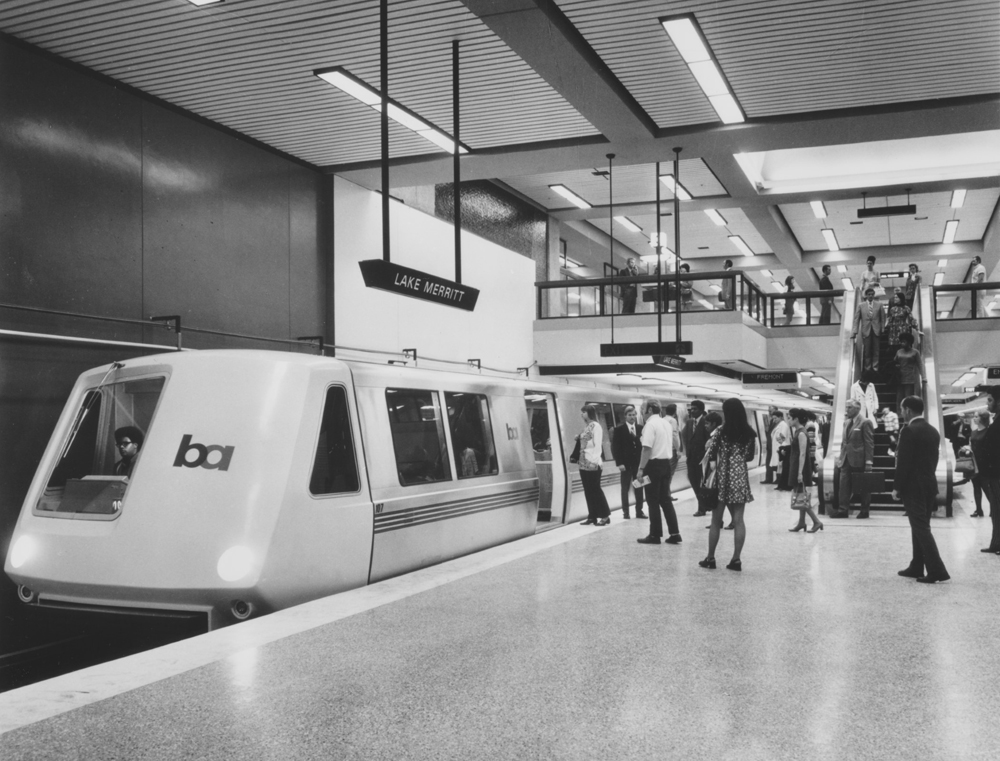
OAKLAND, Calif. — The last original Bay Area Rapid Transit cars are set to be retired next month, public broadcaster KQED reports.
With some 560 of the next-generation “Fleet of the Future” now in service, BART plans to retire its legacy equipment as of Sept. 11, 51 years after the system opened. The transit operator’s move from eight- to six-car trains — to reflect current demand, decrease operating costs, and for safety reasons — means the new equipment will be enough to cover the full schedule.
BART General Manager Robert Powers told KQED that there will be a farewell ride for the soon-to-be-retired equipment, although the date has yet to be set. He told the broadcaster that the legacy cars “have really performed. But change is inevitable, and change is good, and these new cars are just so superior.”
The original fleet of 58 A cars (those with cabs) and 113 B cars (trailing only) was built between 1968 and 1975 by aerospace firm Rohr Industries, and began service when BART opened on Sept. 11, 1972. A later generation of “C” cars will also be retired, with the problem-plagued, Morrison-Knudsen-built C2 series already having been decommissioned in 2021. Eight of the cars have been awarded for reuse ranging from a display at the Western Railway Museum in Suisun City, Calif., to firefighter training equipment [see “BART to award eight retired cars …,” Trains News Wire, March 16, 2022]. The rest will be recycled in a process that can yield up to 22 tons of metal.













BART on its inception promised a seat for everyone, no strap-hanging.
Didn’t happen.
Childhood memories from when BART first started operating.
Is any railway museum going to build a 5’6″ operating track with 3rd rail and security fences to operate any equipment? I doubt it. The Western Railway Museum does not have the space.
The Western Railway Museum is not going to be operating the BART equipment. They will display it inside a new building, the Rapid Transit History Center. There will just be a short section of broad gauge track for the display. The third rail will not be energized in the exhibit.
Also, since no one has done so yet, let me point out BART is 5′ 6″ gauge.
I was about to suggest selling all those surplus 5’6″ guage BART rolling stock to India when I just now remembered that most all metro systems in India are standard guage…go figure, lol!
Interesting. The NYCTA R-40 subway cars (1967-1969) had slanted ends designed by Raymond Loewy. They quickly proved impractical and dangerous for people going from car to car. To make them safer, they got handholds. pantograph gates and bigger handholds. Eventually they were reasonably ugly. The last 100 R-40’s got standard ends.
The BART slant-end cars are newer and do not permit anyone to pass through. However, that reduces flexibility as one of these cars is end-of-train only. BART also redesigned and the C-cars have flat ends, train doors and operator’s cabs.
The original BART cars with the “A” ends were so futuristic compared to the old square, dingy looking cars in the Eastern US. I hope a few are given to transit and railroad museums across the country.
The 2022 Trains News Wire story on the fate of eight BART cars mentioned one was destined for the Oakland Coliseum for re-use as a bar. With the Oakland Athletics apparently bound and determined to pack up and move to Las Vegas, I wonder whether that car is headed for the scrapper, or if someone came up with a Plan B?
Those were so cool at the time compared to the CTA ones. They still are compared most transportation systems around the United states.
Thus, an important period in BART’s hectic history will be completely closed.
Dr. Güntürk Üstün